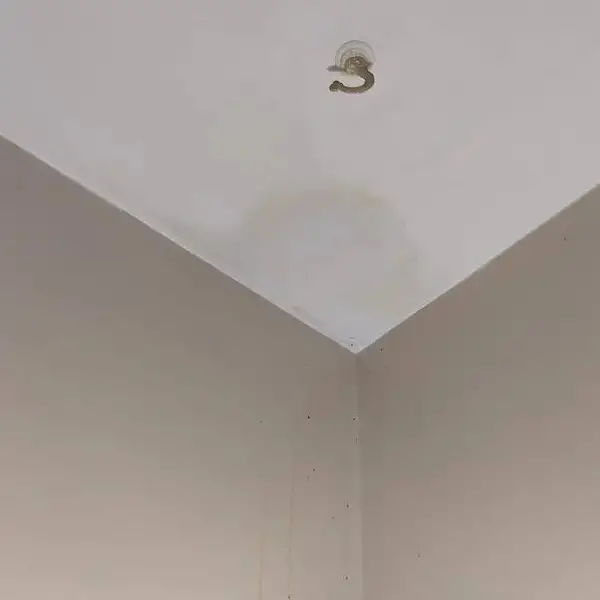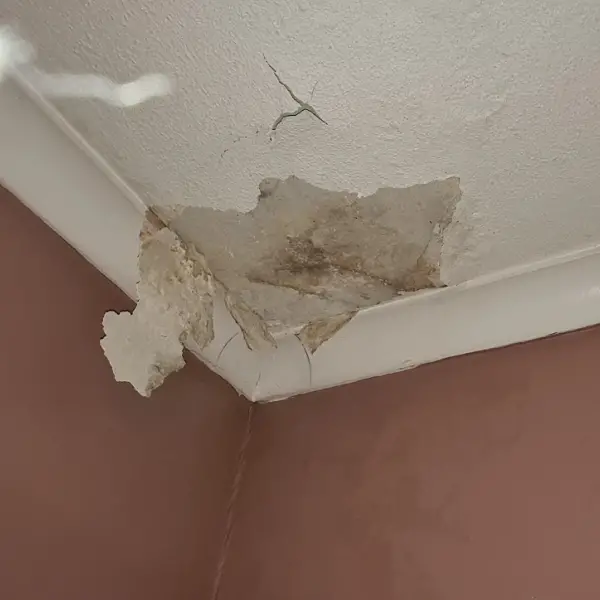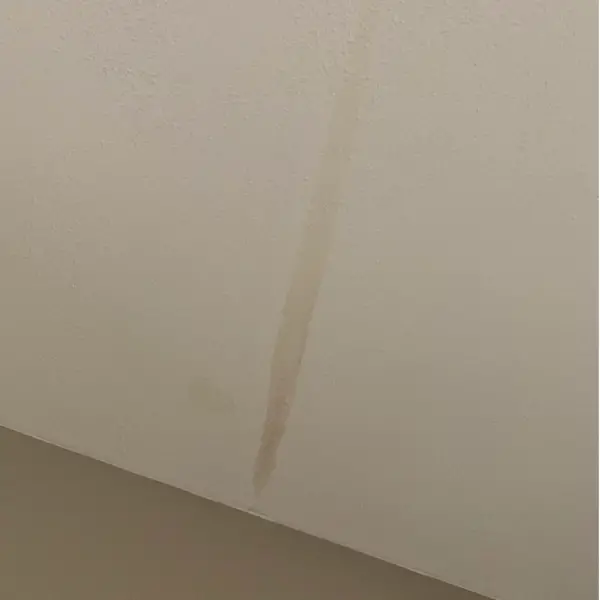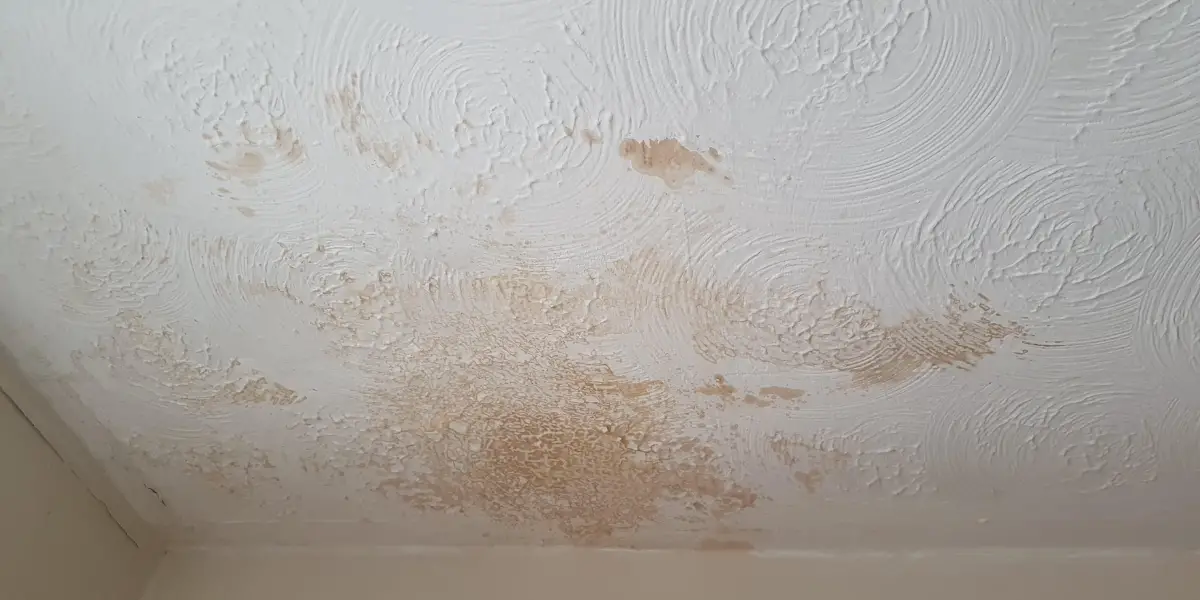Condensation Stain on Ceiling – How to fix for good!
Dealing with a Condensation stain on ceiling is a common issue that many homeowners face, especially during the winter months or in areas with high humidity.
Thankfully by taking a proactive approach the problem can normally be fixed relatively simply. It’s important not to ignore the problem as the issue can lead to further damage, such as mould growth and structural problems.
This blog post aims to provide a comprehensive guide on how to identify and get rid of condensation stains on the ceiling.
By the end of this post, you will be fully equipped to fix any annoying stains and ensure your ceiling remains in good condition for years to come.
Why is there a wet stain on my ceiling?
A condensation stain on ceiling is caused by warm, moist air coming into contact with a cold surface.
This issue is particularly apparent during the winter months. If your ceiling is particularly cold, the warm air rises from below and when it hits the ceiling turns into condensation. This condensation if left to its own devices will eventually turn into bigger issues such as mould and rot.

Condensation stains are commonly found in rooms with poor ventilation or inadequate insulation, and moisture. Areas such as bathrooms, kitchens, and attics are prime spots.
Condensation stain on ceiling – The causes
There are normally a few key factors that contribute to the issue of condensation stains on the ceiling. These include:
- Humidity: High levels of humidity in the air can increase the amount of moisture in the air, making it easier for condensation to form on cold surfaces.
- Temperature: When the temperature of the ceiling drops below the dew point, it creates the ideal conditions for condensation to begin to build.
- Poor ventilation: Without proper air circulation, warm, moist air can become trapped in a room and lead to condensation on the ceiling.
- Inadequate insulation: If the ceiling is not properly insulated, it can become cold and provide a surface for condensation to form.
Identifying the root cause of the issue is important for preventing it from happening in the future. It may require some investigative work, such as checking the ventilation system or inspecting the insulation, but once you find the cause, you can take steps to fix the issue and prevent further damage.

Although identifying the root cause of the issues is not always the easiest of jobs. If you go through the above list methodically you should be above to take positive steps to fix the issue.
What does condensation look like on ceilings?
Condensation stains on the ceiling can take on different forms, depending on the severity and duration of the issue. Some signs of condensation on the ceiling include:
- Water stains: These are usually brownish or yellowish in colour and can spread over time. They are a clear indication that water has penetrated the surface of the ceiling.
- Mould growth: Condensation can create the perfect environment for mould growth, which can appear as dark spots on the ceiling. It can also create a musty, unpleasant odour in the room.
- Peeling or bubbling paint: As the water penetrates the ceiling, it can cause the paint to peel or bubble.
- Dripping water: water condensing may start dropping from the ceiling so be vigilant of pools of water appearing around the home.
It’s important to note that not all stains on the ceiling are caused by condensation. Other causes, such as roof leaks or plumbing issues, can also lead to water stains on the ceiling.

All actions that you take to fix humidity will have a positive effect on your home in the long run.
Condensation and damp in old houses can be an ongoing issue but can be fixed or managed with simple steps. View our full range of articles on fixing damp in old houses for more information.
Condensation stain on ceiling – how to remove?
Preventing condensation stains on the ceiling is the best way to avoid the issue altogether. This is especially so in older houses which tend to get colder in the winter and it becomes more of an issue.
If you already have stains on your ceiling, there are several solutions you can try to get rid of them. These solutions include:
- Increase ventilation: Ensuring proper ventilation in the affected room can help reduce humidity levels and prevent future condensation. You can install a bathroom or kitchen fan or open windows to increase air circulation.
- Use a dehumidifier: A dehumidifier can provide mechanical help to reduce moisture levels in the air and prevent condensation from forming on the ceiling.
- Insulate the ceiling: Adding insulation to the ceiling can help prevent it from becoming too cold which attracts condensation.
- Repaint the ceiling: If the stains are relatively small and not severe, you can repaint the affected area with mould-resistant paint that can help prevent future stains.
- Hire a professional: For severe cases, such as dripping water or extensive mould growth, it’s best to hire a professional to assess the damage and provide a solution. They may need to repair the insulation or ventilation system or replace damaged areas of the ceiling.
It’s important to remember that preventing condensation stains on the ceiling requires ongoing maintenance and vigilance. Regularly inspecting the insulation and ventilation system, keeping humidity levels in check, and addressing any issues as soon as they arise can help prevent condensation stains from forming in the first place.
Condensation stain on ceiling – Final thoughts
Condensation stains on the ceiling can be a frustrating and unsightly issue for homeowners. However, by understanding the causes of the issue and taking proactive steps to prevent it from happening, you can avoid the long-term damage and expense associated with the problem.
If you do notice condensation stains on your ceiling, it’s important to identify the root cause and take action to fix it. Whether it’s increasing ventilation, using a dehumidifier, or hiring a professional, there are several solutions you can try to get rid of the stains and prevent them from recurring in the future.
Older houses are particularly at risk of condensation issues so by taking a holistic approach to managing damp and condensation you can make great progress. Check out our full guide on fixing damp in old houses for further implementation steps.



Leave a Reply